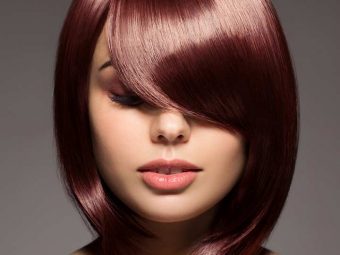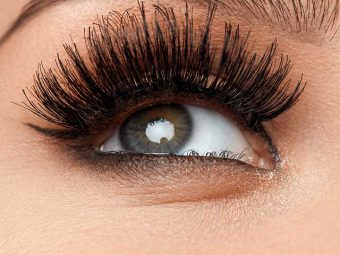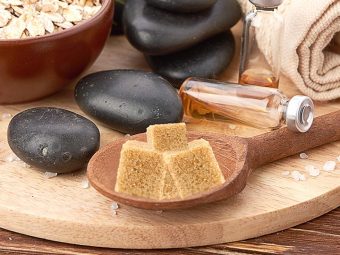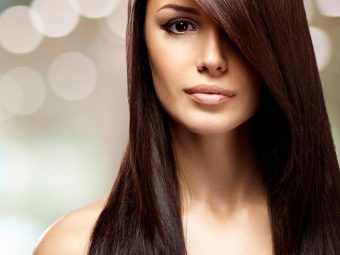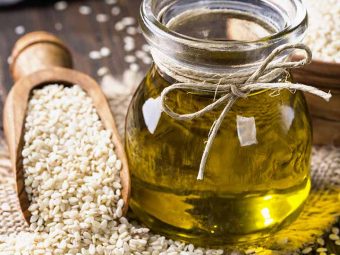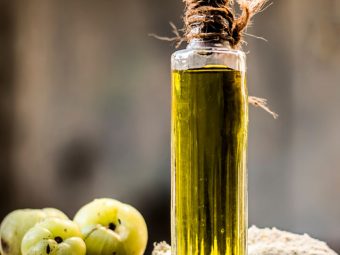How To Pamper Your Hair With A Hot Oil Massage To Prevent Hair Loss
Restore your tresses' former splendor, vigor, and shine with a relaxing massage.

Oiling your hair can be a time-consuming process, and you don’t want your hair to look oily and sticky, so you don’t do it. But did you know that you can use a hot oil massage to prevent hair loss? Yes, you can use this traditional technique to improve and protect your tresses.
Ignoring this age-old practice could leave your hair exposed to a variety of issues. A hot oil massage is beneficial and relaxing to your hair’s and scalp’s health. This article will discuss how hot oil massage benefits your hair and how to go about it. Keep reading!
In This Article
Why You Should Apply Hot Oil To Your Hair
Everyone can benefit from applying hot oil to their hair, no matter their hair type. However, certain hair types can benefit more.
Women with straight hair can oil their hair once in one or two weeks. Their hair texture allows the natural oils from their scalp to distribute evenly down the length of their hair.
This may not be the case with ladies with curly or kinky hair. The kinks and curls could act as obstacles and prevent the natural scalp oils from traveling down the length of their hair. Hence, women with this hair type can use a hot oil hair treatment twice or thrice a week.
Apart from conditioning your hair, a hot oil hair massage could have other benefits too.
What Are The Benefits Of A Hot Oil Hair Massage Treatment?
Incorporating hot oil massages into your regular hair care routine can benefit your hair in many ways. There are various reasons this treatment has stood the test of time.
- Promotes Hair Growth: Massaging your scalp with hot oil stimulates blood circulation in that area, leading to better distribution of nutrients to your hair follicles. This nourishment and strengthening of hair follicles can lead to faster hair growth.
- Increases Hair Thickness: A study showed that massaging the scalp results in a significant increase in hair thickness. This is due to the direct stimulation of force on the dermal papilla cells (1).
- Nourishes Hair Tissues: Hot oil penetrates the skin of your scalp the way a shampoo or a conditioner never can (2). Thus, it gets absorbed deep into your scalp and nourishes your hair follicles and tissues from within.
- Prevents Dandruff: Dandruff occurs in people who have dry skin on their scalp, which causes dead skin cells to flake off in clumps. A study showed that oils from different sources can help reduce dandruff (3).
- Protects From Sun Damage: Applying hot oil to your hair forms a protective sheath over it that prevents the harmful UV rays from damaging your hair (2).
- Reduces Frizz: Hot oil treatment moisturizes your hair from within, which helps reduce flyaway and frizz.
- Adds Shine: Regularly treating your hair to a hot oil massage prevents dryness and split ends, which ultimately leads to shinier and more lustrous hair.
- Reduces Hair Breakage: Regular application of oil lubricates the hair shaft, coating it with a film that protects hair from breakage. It also prevents split ends (2).
Massaging your hair with a hot oil can do more good in the long run. In the following section, we will discuss how you can prepare a hot oil treatment right at your home.
How To Do A Hot Oil Treatment For Hair At Home
Preparing the treatment at home is a simple process and takes about 30 minutes.
How To Prepare Hot Oil For Hair
What You Need
- Oil of your choice
- Glass bowl
- Saucepan (make sure it is bigger than the glass bowl)
- Water
- Stove
What To Do
- Pour a few tablespoons of the oil into the glass bowl. You can put as much or as little oil as you want, depending on the length and thickness of your hair.
- Fill the saucepan halfway up with water and place it on the stove.
- Place the glass bowl inside the saucepan and let the heat from the boiling water warm up the oil.
- Dip your finger into the oil to check if it has heated up to your desired temperature before removing it from the stove.
How To Massage Your Hair Properly With Hot Oil
What You Need
- Towel
- Hairbrush/wide toothed comb
- Shower cap
- Shampoo
- Conditioner
What To Do
- Use a hairbrush or a wide toothed comb to remove all the knots and tangles from your hair.
- Drape a towel around your shoulders to protect your clothes from the oil stains.
- Dip your fingers into the hot oil and rub them together to spread the oil evenly.
- Start massaging your scalp with your fingers in a gentle circular motion for 5-10 minutes.
- Once you have applied oil all over your scalp, you can apply the remaining bit to your hair.
- Tie your hair up in a bun and put on a shower cap.
- Let the oil sit in your hair for an hour. You can also leave it overnight.
- Wash your hair with a gentle shampoo and condition your hair. You may need to use warm water first to thoroughly remove the oil.
Massaging your hair with hot oil is a simple process that can give desired results. But there are too many hair oils on the market – which one is the best?
What Is The Best Oil For Your Hair?
There are plenty of oils that can promote hair health. A few of them, however, are known widely for the same. Let us take a look at them.
1. Coconut Oil
One major benefit of coconut oil is its ability to reduce hair loss. It achieves this by easily penetrating the hair shafts (4).
Coconut oil has antimicrobial and antifungal properties, which help reduce and prevent dandruff (5). Penetration of the hair shaft by virgin coconut oil helps destroy any fungi cells (6). The oil’s conditioning and moisture retention properties help treat split ends and prevent hair damage as well (3).
2. Almond Oil
If you are on the lookout for a light and aromatic hair oil, you may go for almond oil. While there isn’t much scientific evidence supporting almond oil’s case in hair growth, there is a lot of anecdotal evidence. Almond oil contains lipids (monounsaturated fatty acids), proteins, and vitamins (7). These may help improve the overall quality of hair.
The presence of vitamin E and fatty acids suggests that the oil may moisturize and treat split ends. Vitamin E is also known for its antioxidant properties that can help keep scalp infections away (8). Moreover, almond oil has anti-inflammatory properties (9). These could help soothe scalp inflammation.
3. Olive Oil
Olive oil is an excellent hair conditioner and is also known to reduce hair damage and split ends (3). The oil also has antioxidant and antibacterial properties (10) (11). Hence, it could be used as a hair cleanser. Animal studies suggest that oleuropein, a component of olive oil, could stimulate hair growth (12). Olive oil can also penetrate the hair shaft (13). Hence, it could work well in treating dry or damaged hair.
4. Castor Oil
The omega-9 fatty acids in castor oil could help make hair thicker and longer. The oil also can treat split ends and dandruff (3). Some believe it also treats scalp infections, though more research is warranted.
5. Jojoba Oil
Clogged hair follicles can lead to immense hair loss. Jojoba oil is a natural wax ester that may condition the hair and is often used in conditioners and shampoos (14). Jojoba also has anti-inflammatory properties (15). Hence, it may help treat dandruff and other inflammatory infections.
6. Avocado Oil
Avocado oil is a storehouse of fatty acids, amino acids, and vitamins A, D, E, and B6. These nutrients work to stimulate hair growth, moisturize the scalp, and reduce split ends (8), (3).
7. Argan Oil
Argan oil (also known as Moroccan oil) is often used to treat scabies and prevent hair loss and rejuvenate dry hair (16). It is packed with unsaturated fatty acids, and some claim the oil can help treat dry hair (17). It is a good source of antioxidants that are needed for hair; it also keeps hair moisturized (2).
You can try out a range of different oils until you find the one that suits your hair the best. But before you proceed with your hot oil treatment, here are a few things to keep in mind.
Tips To Keep In Mind
- Hot oil treatments work best when your hair and scalp are clean. Hence, wash your hair a day before you oil it.
- Always try to get virgin and organic oils for your hot oil treatments as the chemicals in processed oils can damage your hair.
- Indulge in a hot oil treatment at least once a week to deep condition your hair.
- Always do a patch test with the oil on the inside of your forearm before applying it to your head. This is to make sure you are not allergic to the oil.
- Make sure the oil is not scalding hot when applying it to your scalp and hair. Too much heat can burn the scalp and damage the hair.
Applying hot oil to your hair, irrespective of your hair type, has numerous benefits, such as increased blood flow that may stimulate hair growth. A simple hot oil hair massage can increase hair thickness, prevent dandruff, curb frizz, nourish hair follicles from within, protect the hair from UV damage, decrease hair breakage, and increase hair shine. But before you run off to oil your hair, remember to pick an oil that suits your hair type. Also, you don’t want to burn your scalp, so warm up the oil only a little bit and make sure it is not scalding hot.
Frequently Asked Questions
Is hot oil treatment done on wet or dry hair?
The treatment must be carried out on only dry hair.
Do you need to wash your hair before a hot oil treatment?
It is best to wash your hair a day before a hot oil treatment. This ensures your scalp and hair are clean.
Do you need to wash your hair after a hot oil treatment?
Though you can leave the oil overnight, it is best to wash your hair before you head outdoors. This is because the oil can make dust and dirt cling to your hair.
How often should you do a hot oil treatment on your hair?
You can do a hot oil treatment on your hair once a week.
How long should you keep in the hot oil treatment?
You can keep the hot oil in from 30 minutes to overnight.
Sources
- Standardized Scalp Massage Results in Increased Hair Thickness by Inducing Stretching Forces to Dermal Papilla Cells in the Subcutaneous Tissue, Eplasty, US National Library Of Medicine, National Institutes of Health.
https://www.ncbi.nlm.nih.gov/pmc/articles/PMC4740347/ - Hair Cosmetics: An Overview, International Journal Of Trichology, US National Library Of Medicine, National Institutes of Health.
https://www.ncbi.nlm.nih.gov/pmc/articles/PMC4387693/ - Ethnopharmacological survey of home remedies used for treatment of hair and scalp and their methods of preparation in the West Bank-Palestine, BMC Complementary And Alternate Medicine, US National Library Of Medicine, National Institutes of Health.
https://www.ncbi.nlm.nih.gov/pmc/articles/PMC5499037 - Effect of mineral oil, sunflower oil, and coconut oil on prevention of hair damage, Journal Of Cosmetic Science, US National Library Of Medicine, National Institutes of Health.
https://www.ncbi.nlm.nih.gov/pubmed/12715094 - In Vitro Antimicrobial Properties Of Coconut Oil On Candida Species In Ibadan, Nigeria. Journal Of Medicinal Food, US National Library Of Medicine, National Institutes of Health.
https://www.ncbi.nlm.nih.gov/pubmed/17651080 - Effect of Addition of Antifungal Agents on Physical and Biological Properties of a Tissue Conditioner: An In-Vitro Study, Advanced Pharmaceutical Bulletin, US National Library Of Medicine, National Institutes of Health.
https://www.ncbi.nlm.nih.gov/pmc/articles/PMC5651072/ - A Review Of The Impact Of Processing On Nutrient Bioaccessibility And Digestion Of Almonds, International Journal Of Food Science And Technology, US National Library Of Medicine, National Institutes of Health.
https://www.ncbi.nlm.nih.gov/pmc/articles/PMC5003169/ - The Role of Vitamins and Minerals in Hair Loss: A Review, Dermatology And Therapy, US National Library Of Medicine, National Institutes of Health.
https://www.ncbi.nlm.nih.gov/pmc/articles/PMC6380979/ - The Uses And Properties Of Almond Oil, Complementary Therapies In Clinical Practice, Science Direct.
https://www.sciencedirect.com/science/article/abs/pii/S1744388109000772?via%3Dihub - Virgin Olive Oil As A Fundamental Nutritional Component And Skin Protector, Clinical Dermatology, US National Library Of Medicine, National Institutes of Health.
https://www.ncbi.nlm.nih.gov/pubmed/19167997 - Novel Antibacterial And Emollient Effects Of Coconut And Virgin Olive Oils In Adult Atopic Dermatitis, Dermatitis: Contact, Atopic, Occupational, Drug, US National Library Of Medicine, National Institutes of Health.
https://www.ncbi.nlm.nih.gov/pubmed/19134433 - Topical Application of Oleuropein Induces Anagen Hair Growth in Telogen Mouse Skin, PLoS One, US National Library Of Medicine, National Institutes of Health.
https://www.ncbi.nlm.nih.gov/pmc/articles/PMC4462586/ - Investigation Of Penetration Abilities Of Various Oils Into Human Hair Fibers, Journal Of Cosmetic Science, US National Library Of Medicine, National Institutes of Health.
https://www.ncbi.nlm.nih.gov/pubmed/16258695 - Shampoos And Conditioners: What A Dermatologist Should Know?, Indian Journal Of Dermatology, US National Library Of Medicine, National Institutes of Health.
https://www.ncbi.nlm.nih.gov/pmc/articles/PMC4458934/ - Jojoba In Dermatology: A Succinct Review, Italian Society Of Dermatology, US National Library Of Medicine, National Institutes of Health.
https://www.ncbi.nlm.nih.gov/pubmed/24442052 - Activation of MITF by Argan Oil Leads to the Inhibition of the Tyrosinase and Dopachrome Tautomerase Expressions in B16 Murine Melanoma Cells, Evidence Based Complementary And Alternative Medicine, US National Library Of Medicine, National Institutes of Health.
https://www.ncbi.nlm.nih.gov/pmc/articles/PMC3723062/ - Argan oil: Occurrence, composition and impact on human health, European Journal of Lipid Sciences, Wiley Online Library.
https://onlinelibrary.wiley.com/doi/pdf/10.1002/ejlt.200700220





